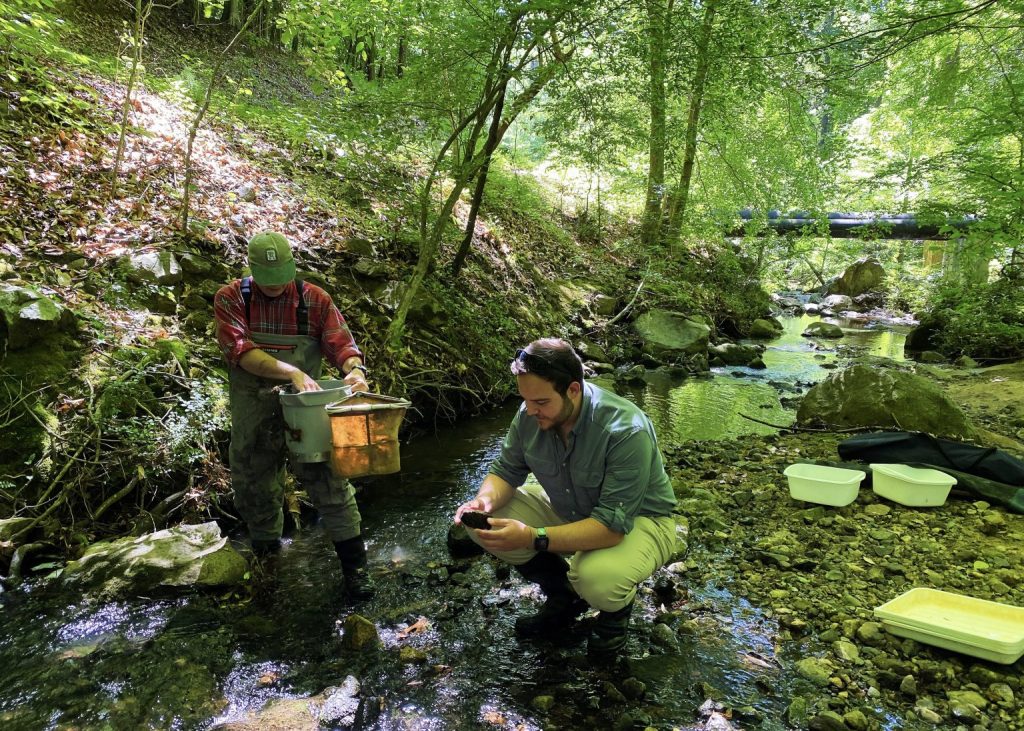Whether you’re washing your hands in a campus bathroom or filling up your water bottle in your dorm, the water that you’re using at UNC makes a lot of stops before it reaches you.
UNC’s campus sources its tap water from the Orange Water and Sewer Authority (OWASA), whose water originates as rainfall within the Cane Creek and University Lake watersheds. A watershed is an area of land where all water eventually drains to the same place. Within these watersheds, water is stored in three reservoirs: Cane Creek Reservoir, University Lake, and Quarry Reservoir. Combined, these reservoirs can support an average of 10.5 million gallons of water per day during severe drought conditions. The University itself is located within the Jordan Lake Watershed within the Cape Fear River Basin.

From Aquifer to Tap
Water from these reservoirs is pumped to a water treatment plant in Carrboro, where it can treat up to 20 million gallons per day. Water is treated in four different steps:
- Mixing – includes coagulation and flocculation, where negative charge is removed from particles in the water, causing contaminants to bind together into larger particles. This makes them easier to remove
- Clarification – the larger particles formed during mixing sink to the bottom
- Filtration – water first sinks through a barrier of anthracite, then a barrier of densely packed sand in order to filter out any remaining particles
- Disinfection – water moves into a clearwell tank, where chlorine is added in order to get rid of any bacteria, viruses, and pathogens that may be in the water. As the water leaves the treatment plant, ammonia is also added.
After treatment, the water is pumped to elevated storage tanks, which maintain water pressure and allow the water to quickly travel to you.
After water on campus is used, it can either be discharged through creeks off campus or be reused after additional treatment. This additional treatment by OWASA’s reclaimed water system includes UV disinfection and a light dose of chlorine. It is then pumped back to campus and used to flush toilets and irrigate campus landscapes. This recycling of water helps reduce UNC’s potable water consumption, which has decreased by 43% since 2007.
What Flows Downstream
Though UNC’s water comes from other watersheds, it is located within the Jordan Lake Watershed within the Cape Fear River Basin, so after water is used, if not being disinfected and reclaimed, it is discharged to nearby creeks within this watershed: Meeting of the Waters Creek, Bolin Creek, Battle Branch, Chapel Creek, Morgan Creek, and Crow Branch Creek. The Campus’ use of reclaimed water helps reduce sending nutrients into the watershed and downstream, which improves the water quality of Jordan Lake.
UNC Chapel Hill operates its own stormwater system with tons of catch basins and inlets and stormwater control measures that also discharge into these nearby creeks. Its Battle Grove Stormwater Conveyance reduces flooding to the area, decreases stormwater runoff, and increases biodiversity, stream health, and water quality by slowing water flow with step pools and filtering out excess nutrients. This is an important step in mitigating downstream problems from campus and is another proactive measure the school is taking to conserve and protect its water on campus.
